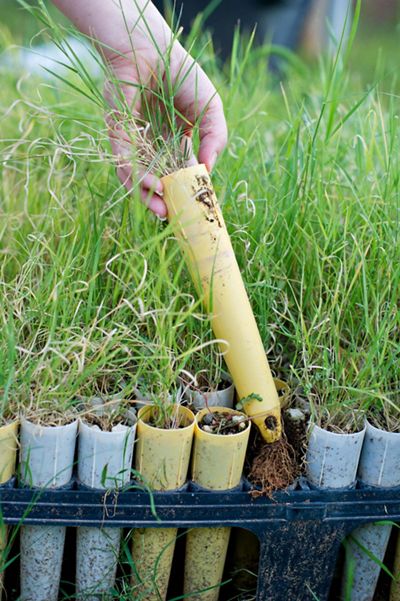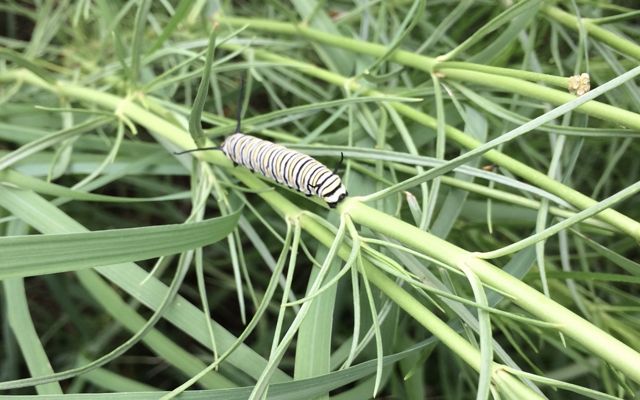
Media Contacts
-
Tracey Stone
Media Relations
Phone: 602-738-1586
Email: tstone@tnc.org
Innovation, intelligence and patience are what make Mark Haberstich a brilliant conservationist. He manages the Aravaipa Canyon Preserve for The Nature Conservancy (TNC) in Arizona.
Isolated Aravaipa Canyon is one of the true natural Arizona wonders, featuring a desert steam, majestic cliffs and bighorn sheep. Located about 50 miles northeast of Tucson, the preserve includes lands at both the east and west end of Aravaipa Canyon, as well as preserve lands intermixed with public land on the canyon’s south rim.
17 years ago, TNC Arizona acquired the 100-acre Cobra Ranch Farm which connects with the Aravaipa Canyon Preserve. Most would simply retire the water rights as a conservation benefit as we deal with intensifying climate change impacts on water scarcity. Not Mark. He had an out of the box idea that, with time, became a conservation success that still protected our water and increased biodiversity.

Quote: Mark Haberstich
“This project shows us the power of nature and the importance of sustainable practices. Restoring this land has been a labor of love.”
The Cobra Ranch farm produced 200 bales of native grass hay last summer as part of our sustainable farming practices. Native grass hay improves soil health and provides habitat for numerous native species. With Mark’s TLC, soil health improved, and native grasses grew. Then, horsetail milkweed popped out of the ground which supports threatened pollinators including Monarch butterflies. Traditional farmers usually spray milkweed since it contains toxins that can be poisons to livestock if consumed in large amounts. Monarch caterpillars have evolved a resistance to the toxins, and by consuming milkweed they become inedible to most predators. When preserve staff harvest hay for cattle, they are able to avoid patches of milkweed, leaving food and habitat for pollinator species. If cutting milkweed is unavoidable, that hay is used as mulch for restoration purposes.
“I wasn’t even sure we would be able to bring this land back to life by the shape it was in,” said Mark Haberstich, “but I’ve been excited about previous pilot projects and set out to create a plan. The co-benefits of this project make it even more special to me.”

Back to the Beginning
We all know conservation doesn’t happen overnight. It was July 2008 when Mark put native seeds including 20 species of native grass on the unhealthy soil left behind from a farm that had been overgrazed and become unviable. There were no guarantees, only dreams. Mark’s plan was to use only a small amount of water from an old irrigation system and rely on any rain the monsoon provided to water the grasses. This also enabled two opportunities to harvest – one at the end of June and another after the Monsoon in September. His plan worked. By 2010, he was able to harvest hundreds of bales of native grass hay to feed the cattle that grazed on the Cobra Ranch Since then he has continued to experiment with production, selling extra hay to both local ranchers for feed and conservation groups for restoration.
“This project shows us the power of nature and the importance of sustainable practices, added Mark, “Restoring this land has been a labor of love.”
Healthier for Cattle and People
Often, cattle are fed grains and given hormones to grow fast before going to market. Feeding on native grasses hay is a much more pleasant experience for the animals and can improve their overall quality of life. On top of that, grass-fed meat tends to be leaner and can provide health benefits to people because there are more omega-3 fatty acids and antioxidants than those that feed on grains. Additionally, people say grass-fed beef tastes better than grain-fed beef.


Positive Results for Pollinators
To Mark’s surprise horsetail milkweed began to grow even though he hadn’t planted any. It had lain dormant in the ground for years, likely due to pesticide use by the previous farmer. This is great news for pollinators who face many threats including land fragmentation and climate change impacts yet play a crucial role in our global food production. Bees and other insects enjoy horsetail milkweed’s nectar while the plant serves as a host for Monarch butterflies whose caterpillars feed on its leaves. Historically, Native Tribes used horsetail milkweed for medicinal purposes.
Last summer, the chapter donated extra native grasses hay to long-time partners Sky Island Alliance, Borderlands Restoration and Arizona Wildlife Support to support their operations.
This multi-year endeavor confirms native grass hay is good for wildlife, improves soil, requires less frequent use of water than traditional crops, and is nutritious for cattle. Mark’s passion project has shown this could be an effective strategy for farmers and ranchers that desire to produce something that can benefit diversity, and are interested in contributing to a sustainable future.

Subscribe to Nature News, our monthly newsletter
Get global conservation stories, news and local opportunities near you. Check out a sample Nature News email.
The Nature Conservancy is a global conservation organization dedicated to conserving the lands and waters on which all life depends. Guided by science, we create innovative, on-the-ground solutions to our world’s toughest challenges so that nature and people can thrive together. We are tackling climate change, conserving lands, waters and oceans at an unprecedented scale, providing food and water sustainably and helping make cities more resilient. The Nature Conservancy is working to make a lasting difference around the world in 83 countries and territories (39 by direct conservation impact and 44 through partners) through a collaborative approach that engages local communities, governments, the private sector, and other partners. To learn more, visit nature.org or follow @nature_press on X.